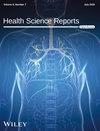Comparison of Deep Learning and Gradient Boosting: ANN Versus XGBoost for Climate-Based Dengue Prediction in Bangladesh
Abstract
Background and Aims
Bangladesh is confronting an unprecedented threat from dengue, worsened by climate change. Understanding its trends and pinpointing climatic risk factors is vital for effective intervention and control. This study aimed to compare the artificial neural network (ANN) and eXtreme gradient boosting (XGBoost) models to identify the best model for predicting dengue incidence and determining key climatic risk factors in Bangladesh.
Methods
Monthly dengue data were obtained from the Directorate General of Health Services, while climate data were collected from the NASA website. Exploratory data analysis, as well as ANN and XGBoost models, were performed to analyze the data.
Results
From 2000 to 2023, Bangladesh reported 565,890 dengue cases, with 2023 having the highest outbreak at 79,598 cases. Precipitation, ranging from 0 mm to 1012.50 mm (mean = 181.58 mm), showed significant variability, with the highest recorded in August 2017. Relative humidity had a mean of 75.99%, and wind speed averaged 10.11 m/s. XGBoost outperformed other models, achieving the lowest root mean square error (918.83) and mean absolute error (479.44). The model identified precipitation as the key factor influencing dengue incidence, followed by relative humidity and wind speed.
Conclusion
This study's findings, which incorporate climate data and predictive modeling, offer valuable insights for preventing and controlling dengue epidemics and for early warning systems in Bangladesh. To mitigate the impact of future outbreaks, key factors such as precipitation, relative humidity, and wind speed should be closely monitored, alongside proactive measures and enhanced surveillance.


 求助内容:
求助内容: 应助结果提醒方式:
应助结果提醒方式:


